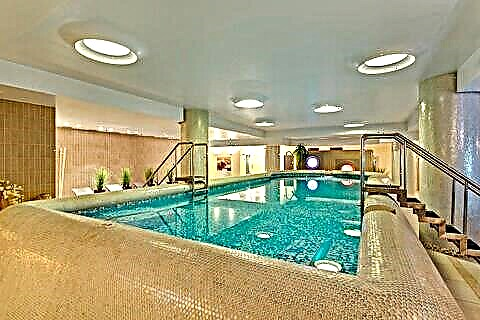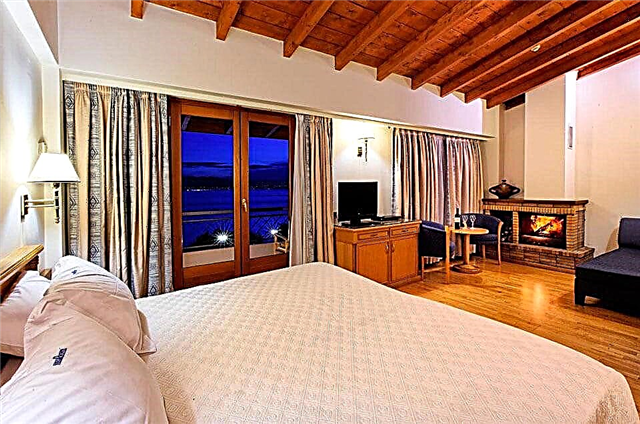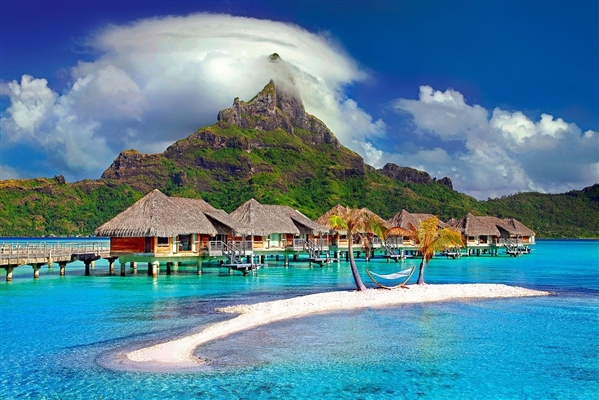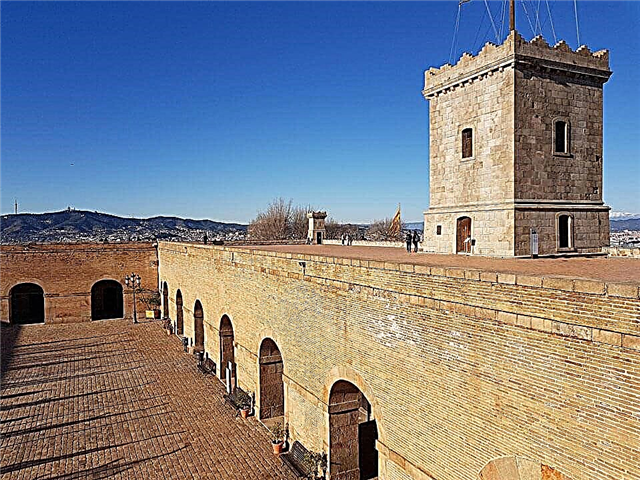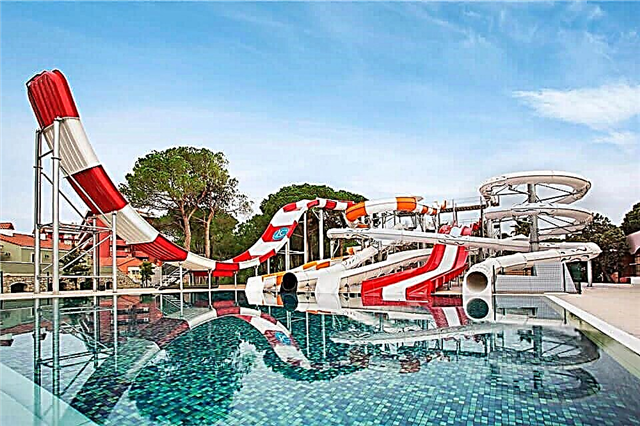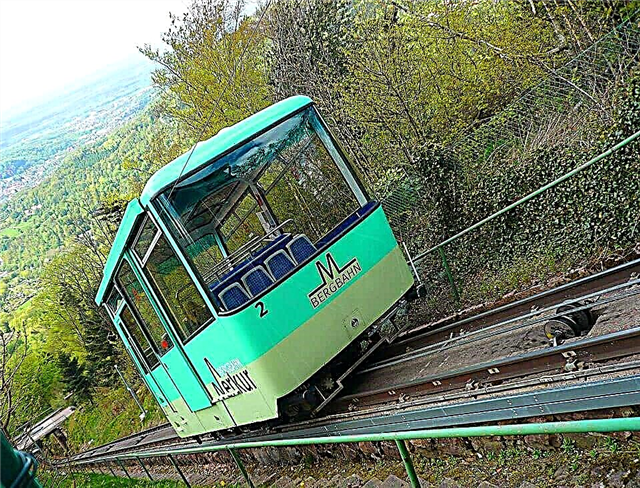The Spasskaya Tower of the Moscow Kremlin has long earned the title of "visiting skating rink" of Russia. Along with other structures, it is part of the architectural complex of Red Square. The chimes installed in the upper part of the tower are known all over the world.
Construction history

The towers were built in order to strengthen the defensive line of the walls of the medieval Kremlin. On the site of the modern Spasskaya Tower, the Frolovskaya Strelnitsa (a gate tower or barbican), made of white stone (14th century), previously stood. In the 60s. 15th century, during the reconstruction, it was decorated with bas-reliefs depicting Dmitry Thessaloniki and George the Victorious.
In 1491, by decision of the Moscow Grand Duke Ivan III, the barbican was replaced with a full-fledged tower. The building was entrusted to the Italian architect Pietro Antonio Solari. In drawing up the plan, the architect used buildings in Europe as an example. The tower has a regular rectangular base. Adjacent to it is a barbican designed to protect the entrance gate.
The passage is limited on both sides by lifting grates - germs. They made it possible to isolate enemies who had broken through in a confined space. The upper gallery was used for shelling the invaders. An additional method of defense was a wooden bridge, which was raised in case of danger and closed the entrance to the tower.
The Spassky Gate was the main entrance to the Kremlin. Passing through them was accompanied by a special ritual. The rider was supposed to get off the horse and walk bareheaded. If a man forgot to take off his hat, then a penance was imposed on him - 50 bows to the ground.
The Spassky Gate was used during solemn ceremonies:
- coronations of Russian monarchs
- meeting of foreign embassies
- wires of military connections
- religious processions
Spasskaya Tower in the 17th century

Initially, the donjon at the Spassky Gate had a low height. It was decided to increase it at the beginning of the 17th century. The Russian master Bazhen Ogurtsov was involved in the work with the assistance of the English architect Christopher Galovey.
The summit was built in several tiers, gradually tapering upward. The general appearance corresponded to the Gothic architectural style. Stone figures were used for decoration. However, their nudity confused Muscovites, so Tsar Mikhail Fedorovich ordered to sew special robes in which the statues were dressed.
The bas-reliefs of the patron saints of Moscow were fixed at the entrance gate. They were transferred from the Frolovskaya Strelnitsa. At present, part of the image of St. George the Victorious is kept in the collection of the Tretyakov Gallery. For the first time in the Moscow Kremlin, a hipped-roof stone pommel was erected on the Spasskaya Tower. The wooden bridge at the entrance was replaced with a permanent stone one.
The tower today

In the 90s, the movement for the return of the towers to their original form intensified. After the collapse of the USSR, the red stars at the top of the tower were considered a relic of the past. The writer V. Soloukhin was the first to write an appeal calling for the removal of Soviet symbols from the Kremlin towers.
A number of political organizations ("Return", "People's Cathedral", etc.), as well as the Russian Orthodox Church, are in favor of establishing a two-headed eagle on the spire of the Spasskaya Tower. In 2010-14. restoration work was carried out on the outside of the tower. A gate icon was found under a layer of plaster.
Gate icons

Researchers suggest that the images of saints at the gates of the Spasskaya Tower appeared in the 1920s. 16th century. The icons were painted in honor of the miraculous deliverance of the capital from the Tatar invasion under the leadership of Khan Makhmet-Girey.
According to legend, a blind nun from the Ascension Monastery dreamed how the Monks Sergius of Radonezh and Varlaam of Khutynsky persuaded the patron saints of Moscow - Peter, Alexy and Iona, as well as Leonty of Rostov, to ward off the threat from the city. Soon the siege was actually lifted.
In commemoration of the miracle, the faces of the saints were captured on both sides of the gate in the Spasskaya Tower:
- on the western wall - Bishops Peter and Alexy at the feet of the Mother of God
- on the eastern wall - Saints Sergius and Barlaam at the feet of Christ
From time immemorial, 2 icons were placed at the top of the tower above the driveway, which gave the name to the building:
- Savior of Smolensky
- Savior Not Made by Hands
Spas Smolensky

The icon depicting the Savior appeared on the tower in 1514. It was painted to commemorate the annexation of Smolensk to the Moscow principality, therefore it received the name "Savior of Smolensk". The image was installed on the wall facing Red Square. An inextinguishable lamp was constantly burning in front of the icon, which was looked after by the priests of the Intercession Cathedral (Basil the Blessed).
The icon depicted the Savior standing in full growth. In his hands he was holding an open book of the Gospel. The image was endowed with miraculous abilities. After the October Revolution, the Savior of Smolensky was considered lost. At the beginning of the 21st century, a new image was made from mosaics. During restoration work in 2010, a fresco was uncovered on the wall. She turned out to be an image of the Savior of Smolensky. It was re-consecrated by Patriarch Kirill.
Icons of Our Lady of the Caves and the Savior Not Made by Hands
The icon of the Savior Not Made by Hands, according to legend, protected the inhabitants of the city of Khlynov (now Kirov) during a devastating plague epidemic in the middle of the 17th century. Tsar Alexei Mikhailovich learned about the wonderful image. He gave orders to deliver the icon to the capital. The procession brought the Savior Not Made by Hands to Moscow, where he was placed in the Novospassky Monastery.
The painters removed 2 copies from the icon:
- one to Khlynov
- the second - to the Spasskaya Tower from the Kremlin side
In the 19th century, another copy was placed on the iconostasis of the Novospassky monastery. The gate icon was placed in an icon case made of precious metals and gems. It was removed and taken out by the French during the Napoleonic invasion. The image itself disappeared without a trace in the post-revolutionary period.
At the entrance from the inner, Kremlin side of the Spasskaya Tower, there was also an icon of the Pechersk Mother of God. It was written in 1673 by Ivan Yaroslavtsev, at the direction of Tsar Alexei Mikhailovich. The image represented the seated Mother of God with a baby in her arms. A metal icon case with glass covered the top of the icon. A lantern was lit in front of the icon at night. With the establishment of Soviet power, the gatekeeper disappeared.
Chimes

The chimes installed on the Spasskaya Tower have long been recognized as the main measure of time in the country. Since the times of the Soviet Union, the striking of these clocks counts not only every hour, but also marks the beginning of the New Year. The first clock was mounted on a tower in the 16th century. H. Galovey developed a new mechanism with unique capabilities.
The clock counted down day and night time to designate which was used by Arabic numerals and Cyrillic letters. The dial was depicted in the form of the sun. The circle rotated, and the arrows were fixed in a stable position. This clock was an adornment of the Kremlin from 1625 to 1705.
Peter I ordered to remake the dial in the usual way and divide it by 12 o'clock. At the end of the 18th century. on the Spasskaya Tower, a new English mechanism was installed for counting the time. The authors of the current Chimes are Russian masters Ivan and Nikolai Butenopa. They connected a mechanical device with 35 specially selected bells.

A melodic chime played 2 melodies:
- Preobrazhensky march at 6 and 12 o'clock
- hymn of D. Bortnyansky "If our Lord is glorious in Zion" at 3 and 9 o'clock.
The clockwork is located at the top of the building. Spassky chimes have 4-sided dials. In order for the dial and hands to be visible from afar, they were given significant dimensions:
- diameter - 6.12 m
- minute indicator length - 3.27 m
- length of the hour pointer - 2.97 m
- height of numbers - 0.72 m
The countdown every hour is accompanied by the striking of the clock. The clockwork is programmed to play 2 melodies at different times:
- The national anthem of Russia at 6, 12, 18 and 00 hours.
- "Glory" (from the opera "A Life for the Tsar" by M. Glinka) at 9, 15, 21 and 3 hours.
Until 1937, the plant of the device was carried out in manual mode. In the 30s. 3 electric motors were connected to the installation.
Chimes in the 20th century

The Spassky chimes were damaged during the shelling of the Kremlin in 1917. During the repair work, the musical accompaniment was changed. The clock began to play "Internationale" (12 o'clock) and "You fell a victim in a fatal struggle" (00 o'clock). The mechanism was adjusted by the musician Cheremnykh and the locksmith Berens. From 1938 to 1996, the sound of the music was discontinued. At the end of the 20th century. carried out the restoration of the watch device, the hands and numbers were covered with a layer of gilding.
Chapels
A wooden chapel was built to protect the clergy from the weather, who performed the services in front of the icon of the Savior. In 1802-1803, two stone outbuildings were erected on both sides of the tower.
They received the names:
- Spasskaya chapel or "Great Council Angel"
- Smolensk Chapel or "Great Council of Revelation"
Were under the patronage of the Intercession Church. Throughout the 19th century. the buildings have undergone numerous changes and redevelopment. In 1925 they were dismantled.
Spasskaya chapel
Inside the building was a list with the icon of the Savior on the gate. The image rested in a silver robe adorned with gems. Total weight 26 kg. The icon was revered as miraculous. With donations, 70 gold-plated icon lamps were created. There was also a huge candelabrum in the chapel.
The surface of the walls was covered with frescoes on religious themes and icons:
- Grebenskaya Mother of God
- Nicholas the Wonderworker
- Russian saints
A starry sky is painted on the ceiling. The wall cladding is made of reconstituted marble. The outer door was decorated with the face of Christ in an angelic image. For this, the chapel received the nickname - "The Great Council of the Angel". On the feast of the Savior of Smolensk, a solemn divine service was performed.
Smolensk chapel
In the middle of the building there was an iconostasis. It included icons of the Savior, the Mother of God, archangels and saints. All icons were placed in vestments made of precious metals, decorated with carvings and enamel. The front door had its own images:
- outside - Annunciation
- inside - the Savior
Every year, an all-night service was held in the chapel on the eve of the feast of the Smolensk Icon of the Mother of God.
Stars
The main symbol of Soviet power, a 5-pointed star appeared on the Spasskaya Tower in the mid-1930s. 20th century It replaced the eagles that had previously crowned the dome.

Double-headed eagle. The tradition of crowning the spire at the top of the tower with a state symbol dates back to the 16th century. The first emblem was a two-headed eagle carved out of wood. So that the figure was clearly visible and it did not deteriorate so quickly under the influence of natural conditions, the bird began to be made of metal covered with gilding. In 1935, the eagle, as a sign of autocracy, disappeared from the tops of the domes. Currently, there is a controversy about his return to his former place.
Gemstone star. The project was developed by Academician F. Fedorovsky in 1935. For the manufacture of the figure, an alloy of copper with high-alloy stainless steel was used. In the center was an image of a sickle made of semi-precious stones and a golden hammer. Beams spread from the center to the vertices of the corners.

However, the star had disadvantages:
- quickly dimmed from bad weather
- dimensions out of harmony with the overall design of the tower
In 1936, the star was removed from the Spasskaya Tower and transferred to the building of the Northern River Station in the capital. In the spring of 1937, the first ruby star was lit on the tower. It is made of 2-layer glass:
- ruby - outer
- dairy - internal
In the middle there is a 5 thousand W lamp that works autonomously. The frame and structure of the star allows it to rotate freely around its axis. The distance along the axis of the beams is 3.75 m. For successful operation, the mechanism is equipped with filters and special ventilation. Together with the star, the height of the Spasskaya Tower is 71m.
Memorial plaques
White stone plaques with commemorative inscriptions are installed above the entrance passage under the tower. Inscriptions carved in 2 languages:
- latin
- Russian
They inform about the time of construction of the tower, its customer and architect.
How to get there
The Spasskaya Tower is located on Red Square. It is convenient to get to it using surface or underground transport:
- bus - No. 158 (stop "Red Square");
- metro lines - Sokolnicheskaya (station Okhotny Ryad, Library named after Lenin), Arbatsko-Pokrovskaya (station Ploshchad Revolyutsii), Zamoskvoretskaya (station Teatralnaya), Filyovskaya (station Alexandrovsky Sad) , Serpukhovsko-Timiryazevskaya (station "Borovitskaya"), Arbatsko-Pokrovskaya (station "Arbatskaya"), Kaluzhsko-Rizhskaya (station "Kitay-gorod").
Address: Moscow Kremlin, between the Senate and Tsarskaya towers
Coordinates: 55 ° 45'09.2 ″ N 37 ° 37'17.0 ″ E

